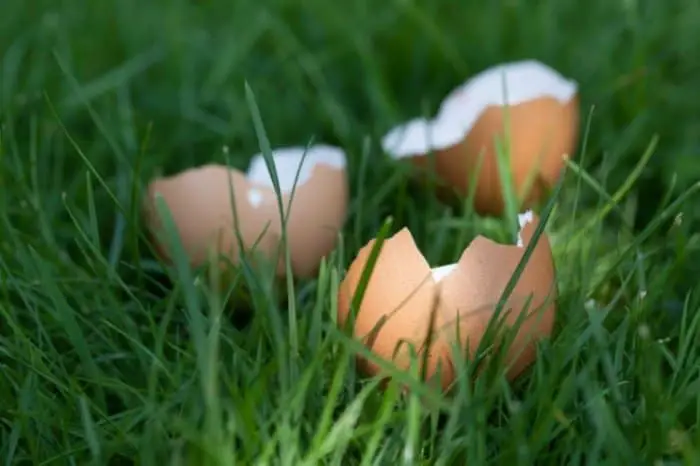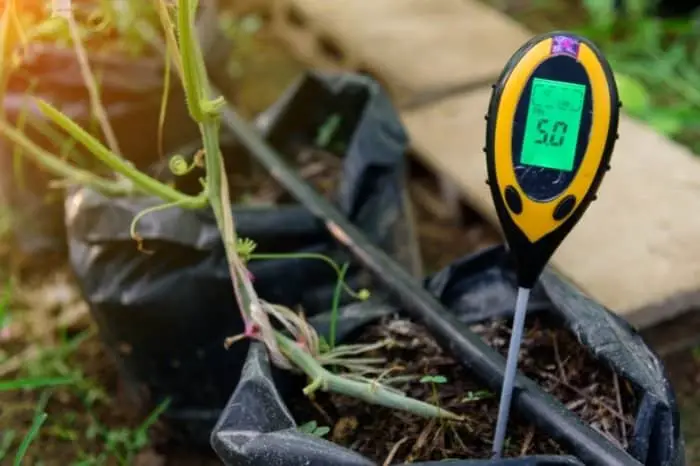Last Updated on October 30, 2022
Just as calcium is needed in humans to build strong bones and teeth, it is also essential in plants, especially for rigid cell walls. So, let’s talk about how to increase calcium in the soil.
One secondary macronutrient required by plant soil is calcium. Even though calcium isn’t needed in quantities as the general nitrogen, potassium, and phosphorus (NPK) are needed: calcium is still essential for the optimal growth of a plant.
Calcium is important for the proper development of plants and any deficiencies of calcium in the plant can cause stunted or weak growth. Therefore, proper supply of calcium in the soil is essential for optimal development. So let’s dive in and learn how to increase calcium in the soil.
Importance Of Calcium In Soil
Of the many important minerals in the soil, calcium is one of them. Here is some of the importance of calcium in soil:
- Calcium assists in keeping the plant upright. Hence it plays a crucial role in soil structure.
- Calcium is required for plant support and it is required for building a strong cell wall and cell membrane.
- It also provides transport for other materials.
- Calcium helps with better water penetration.
- Calcium also helps lowers salinity levels in the soil.
Deficiency Of Calcium
The deficiency of calcium can cause some adverse effects in plants and they include:
- Blossoms and buds may begin to shed prematurely.
- Plant tip burns.
- Blossom end rot.
- Improper levels of calcium in the soil can also cause the shelf life of some fruits such as tomatoes and cantaloupes to reduce drastically.
- Calcium deficiency may even lead to the death of a plant.
Add Calcium To Soil
Calcium is usually added to soil to increase calcium levels or prevent calcium deficiency. Deficiency in calcium in the soil is easily solved through appropriate nutrition or through calcium supplements for plants. Supplying the soil with good quality calcium sources will assist in mitigating calcium deficiencies.
How To Increase Calcium In Soil
The first thing to determine if your soil is low in calcium is to do soil testing. Soil testing will let you have an idea of the amount to add to increase calcium in the soil. If you’ve already begun planting, you can also notice low calcium levels by noticing any deficiency in your plant. So here are ways on how to increase calcium in soil:
1. Soil Additives
If you plan on using soil additives to add calcium to your soil, it’s advisable you test your soil pH. When you do this, it will help you determine the type of soil additive to use. The two most common soil additives used are gypsum and lime.
Down to Earth Organic Garden Gypsum Calcium Sulfate, 5 lb
You can purchase these at any garden, lawn, or home improvement store. You can as well obtain them from Amazon.
To maintain the soil pH levels the same way they are while adding calcium, then you should make use of gypsum. However, if the pH needs to be increased, lime addition is recommended.
2. Addition Of Eggshell To Soil
The eggshell contains adequate calcium that many types of plants can benefit from. Therefore, you can apply some eggshells to the soil. But before adding eggshells to the soil, put the eggshell in an empty container for a few days then add them to your soil.
Ensure the eggshells are as dry as possible so store them in a coffee tin or storage container. After doing this and they have dried, grind them in a blender or food processor. Since they are dried, it should be easy for the eggshell to grind up easily.
The ground eggshell should have a similar consistency as coffee grounds or flower grounds. If then eggshells are blended to a finer consistency, it will be easier for the soil to absorb the calcium in them.
Make use of your hands or tilling machine to mix the eggshell powder into the soil. Do this at least a week before you begin to plant. This is to ensure the soil is in peak growing condition.
However, if you’ve already started planting, just spread the blended eggshell carefully around your plants’ soil.

Once you’ve done this, ensure you keep a close eye on the growth of your plant. You can always add more eggshell powder several weeks later depending on the progress your plant exhibits.
Absorption of calcium in the blended eggshells can take as long as 6 to 12 months for certain plants. So if you notice your plants are already growing pretty well, it may not be necessary to add extra eggshell powder.
3. Bone Meal
Bone meal is a high phosphate fertilizer and can be used o increase calcium in the soil. it is slow releasing and less soluble. The bone meal should be used for soil that requires raising its pH moderately.
4. Epsom Salts
Epsom salt is also known as magnesium sulfate. Adding Epsom salt is a great way of increasing the calcium levels in the soil.
5. Foliar Spray
Foliar spray commercially sold is the fastest solution for serious calcium deficiency. This is because the plants will assimilate the nutrient more easily through leaves and roots. Foliar spray can also be made at home from using chamomile or seaweed.
Too Much Calcium In Soil
Calcium may also be in excess in the soil. Once there’s excess calcium in your soil, your soil pH tends to increase meaning the soil becomes too alkaline. This may lead to disturbance in ion balance.
So, always ensure you add the right amount of calcium required to your soil. Always do appropriate soil testing to have an idea of the right quantity of calcium to add to your soil.

FAQ’s
How do you fix calcium deficiency in soil?
The most effective way to fix calcium deficiency in soil is to add gypsum, according to the University of California, Berkeley. Gypsum can be used as a fertilizer and is available at many gardening centers and nurseries. Keep Learning Calcium deficiency in soil can cause plants to wilt, and it can also cause problems such as stunted growth.
Gypsum is one of the best ways to help with this problem. Gypsum is a type of rock that contains calcium sulfate. This chemical compound helps to make the soil more alkaline (meaning the pH is higher than 7). Gypsum is usually added to soil at a rate of about 1 pound per 100 square feet. To add this amount of gypsum to your garden, you will need to use a shovel or pickaxe. Dig a hole in the soil that is at least 2 inches deep and spread the gypsum out. It may be mixed with compost to make it easier for the plants to absorb the nutrients from the soil. Be sure to spread the gypsum evenly around the area you are working in. Some people put the gypsum on top of the soil, but this may not work as well.
What does help calcium help plants with?
Calcium is a macronutrient and is needed for growth and development. Calcium is used in the construction of cell walls, for example.
Calcium also helps to protect plants against cold, drought, pests, diseases and fertilizers. A well-balanced nutrition program for your plants will include calcium as well as other nutrients such as phosphorus, nitrogen, sulfur, magnesium, boron, zinc and iron.
Calcium is used in fertilizers as an effective way to increase yield, promote root health and help plants grow in acidic soils.
Why do I need to be careful with calcium in soil?
Calcium is typically used to promote growth, and in high concentrations it can be toxic. For this reason, you need to know how much calcium your soil has before you start adding fertilizer. Calcium can be added to the soil as a liquid or in solid form. The type of calcium that's available will depend on where it comes from, how it was applied and when it was applied. For example, when calcium is applied as a liquid, it will leach out of the soil very quickly and may not remain in the soil long enough to provide any benefit.
How much calcium should garden plants get?
You want to have a plant-based diet that contains no more than 10 percent of its calories from fat, which translates to less than 3 grams of fat per day for an adult. The best way to determine how much calcium your plants are getting is to look at the label on the fertilizer or soil amendment that you're using.
How To Increase Calcium In Soil: Conclusion
There are many ways on how to increase calcium in the soil and we’ve listed some for you. Test your soil to know if they require calcium addition. Also, when adding calcium to your soil, ensure you add the appropriate quantity so your plant can enjoy successful growth.

Eunice is an enthusiastic gardener with a passion for growing beautiful flowers. She loves nothing more than spending time in her garden, tending to her plants and enjoying the outdoors. Eunice has been gardening for over 15 years and has developed a unique style of landscaping that is both practical and aesthetically pleasing. She is especially fond of growing roses and enjoys experimenting with different varieties and colors. Eunice takes great pride in her garden and often shares the fruits of her labor with friends and family. In her spare time, she enjoys reading gardening magazines and attending local horticulture events. Eunice is passionate about her hobby and is always eager to share her knowledge and experience with others.

